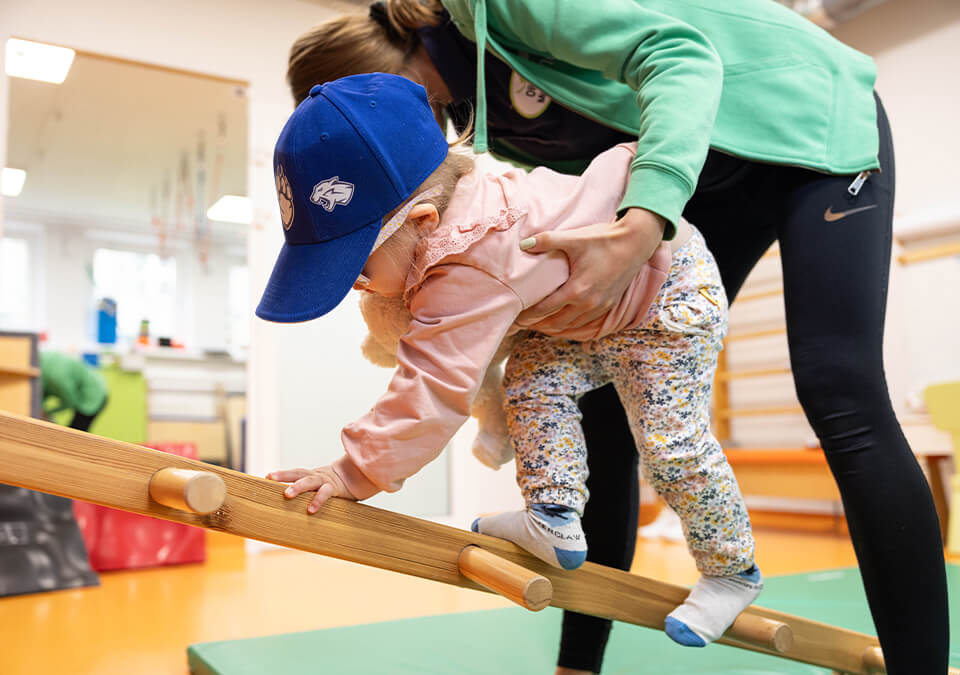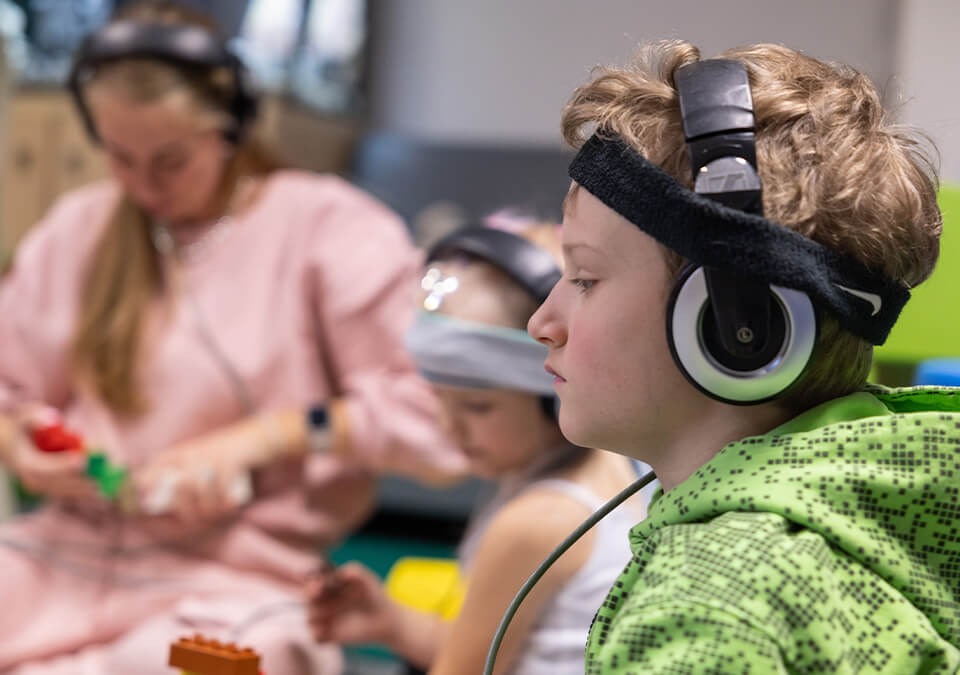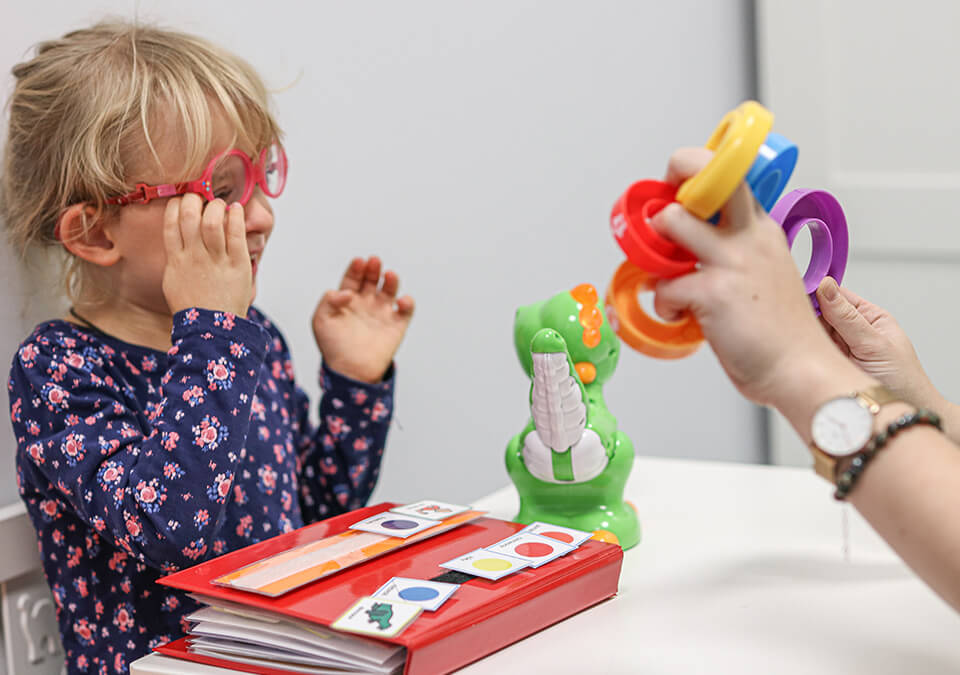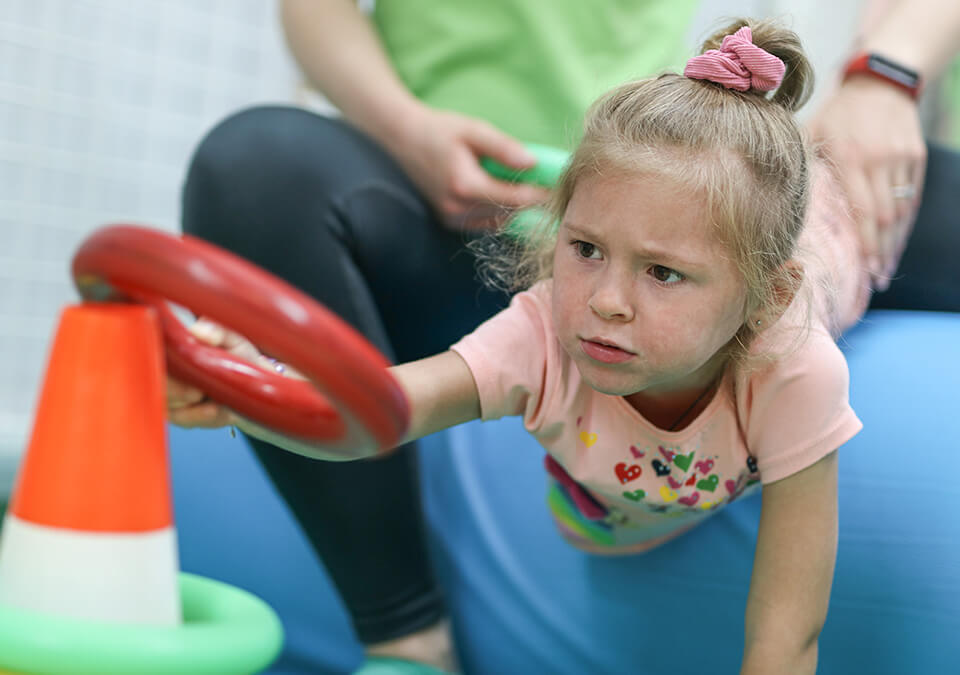
Description of the Course
Autism Spectrum Disorders (ASD) constitute a heterogeneous group of neurodevelopmental disorders manifested on many levels. Addressing the issues of ASD requires perception and investigation into the complete and extensive entirety of developmental conditions. From a functional perspective and in the context of initial conditions (those with which the child appears at the first consultation) as a measurable and changing value over time, crucial in estimating the required support for achieving succession, we treat its adaptive capacity - where the fundamental importance is the awareness of the SELF as a person, the scheme of one's body, and surrounding space. This often remains the starting point in therapy - since a child with deficits at these levels will not use motor skills (which they possess) for functional purposes related to self-service and symbolic play. The clinical picture that children with autism may present includes, among others
- lack of verbal speech / barrier in using verbal speech / lack of pragmatic skills
- not using gestures to communicate with the environment
- lack of understanding or difficulty understanding gestures with social significance
- lack of complex social behaviors that simultaneously combine gaze, facial expression, gestures, and tone of voice
- inappropriate responses to messages
- difficulty in identifying feelings
- difficulty in identifying the beliefs of others
- difficulty in understanding the reasons for the actions of others / problems in the area of cognitive empathy
- difficulty with the appropriate emotional response to another person's state of mind / problems in the area of emotional empathy
- atypical, schematic play / interest in toys without using their function
- attachment to schemas
- motor stereotypes
- atypical sensitivity to stimuli
- movement disorders
- neuropsychiatric symptoms (hyperactivity, sleep disorders, irritability, difficulty concentrating, aggression, self-aggression)
- gastroenterological problems
- symptoms from the extrapyramidal system, epilepsy, dyskinesias, intellectual disability
- disorders of sensory integration processes


Goals of the Course
- improvement of motor skills
- balancing hypo/hyperkinetic movement disorders
- improvement of social skills
- elimination of sensory deficits
- determination of the child's strengths
- identification of the main functional problem
- improvement in posture and locomotion
- improvement in visual-motor coordination
- development of self-care skills
- implementation/improvement of communication processes
- instruction and education in activities suitable for enhancing psychomotor development
- instruction in relaxation techniques
Applied Methods
- Functional Therapy
- Hand Therapy
- Sensory Integration
- Neurological Speech Therapy
- Transcutaneous Ultrasound Stimulation (TUS)
- Craniosacral Therapy
- Hyperbaric Chamber


Used Equipment
- We tailor the equipment individually to the child
Turnus Details
- Identifying the child's strengths
- Determining the main functional problem
- Improving functionality in the sphere of posture and locomotion
- Improving functionality in the sphere of visual-motor coordination
- Shaping skills in the area of self-care
- Implementing/improving the communication process
- Instruction and education in activities suitable for enhancing psychomotor development
- Instruction in relaxation techniques
- 3 weeks
- 1x daily 1 hour of movement physiotherapy
- 1x daily 1 hour of hand therapy
- 1x daily 1 hour of sensory integration therapy
- 1x weekly 1 hour of craniosacral therapy
- 2x weekly 1 hour of neuro-speech therapy
- Additionally, depending on the patient's needs: TUS/ hyperbaric chamber/ other therapies available at the center's offer
- We recommend an individual consultation with a physiotherapist before starting the course in order to plan the therapy
- Bring with you current medical documentation (MRI, X-ray of the hips, hospital discharge summary, medical recommendations, etc.)

The role of physiotherapy in autism spectrum disorders is enormous. We are therefore deeply committed to selecting methods of the highest significance individually for each patient. With the conviction that through movement there can be an opening to the relationship with another person... and a sensitivity to the fact that the child oscillates along the path of learning intensification, acquiring information from the modeling zone for imitation - and the tendency for this increases directly in proportion to the associated emotional value. That's why we choose exercises with the given behavior in them, being a pattern to be recreated, which shape a sense of safety in relation to others. With particular care to run collectively with the nearest level of development - so that the brain receives the maximum information about its own action, thus enriching itself with the post-therapeutic initial value for the child's further successes.



